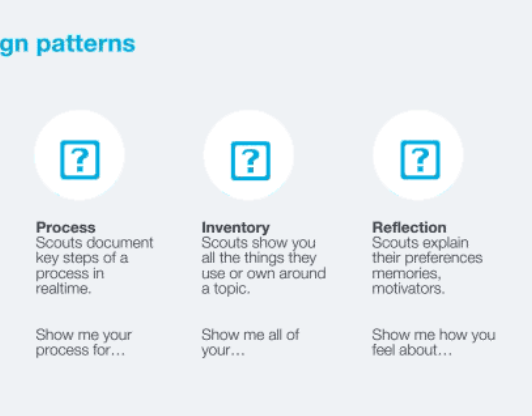Having a trends section connected to your development log will help you reflect and prioritize what gets focused on next. Pictured above: Activity counts broken down by leadership skill (development priority) and by discipline (topic area).
Development logs
The Development Log is a spreadsheet with all the key data about your professional experiences and development activities. It serves as the centerpiece for activity tracking during your professional development and later turns into a planning artifact.
Using a development log has some significant advantages:
- It encompasses every waking moment of your time, which helps you see both your on-the-job experience in addition to your off-the-job training.
- Activity can be shared almost immediately.
- You can efficiently act on your development priorities.
- The visual representation of activity exposes prioritization needs.
- There is no lengthy, formal activity log to create and read through.
Again, the most valuable part of the development log is how visual it is and the ability to give a holistic overview of your professional experience and development. It makes it easy for you to glance at what you've been doing, to understand what you are consciously (or unconsciously) avoiding, and to branch out into new disciplines and development priorities overtime.
How do I create a development log?
Development logs are pretty easy to create and don't take too much time to update. Download the template I use here.
Here is an example of what my development log looks like in Google Sheets:
Pictured above: a screenshot from my 2020 development log. I have a sheet for my log and a sheet for trends.
The columns in the spreadsheet represent the key aspects I choose to track. I have been tracking a handful of important components:
- activity (What I did)
- format (How I did it)
- cost (If it was free or came at a price)
- link (If there are reference materials)
- topic/discipline (What area of focus)
- core development priority (What leadership skill I'm developing)
Are development priorities a key to long-term success?
Absolutely! I use my development priorities as a guide when deciding where I need to focus. If you have not defined your development priorities I recommend picking one to three core leadership skills. The Harvard Business Review uncovered sixteen skills leaders need at every level a few years back and they are extremely valuable. Reflect on your current job as well as your aspirational job to determine which development priorities might be a good fit for you. This deck looks good if you have your sights on leadership.
So what does this do for us? How does it help us?
Overtime this approach has helped me clearly and effectively share my development journey with mentors, managers, potential employers, and coworkers. It tends to be more valuable than an official development plan because you use storytelling to show the journey you have been on and what is important to you in your career.
Additionally, the development log has helped me plan out what to do next. Sure, these activities (and their relationship to your development priorities) might seem small, but making these actions visible is at least something you can collect and review. In an ideal world you log these activities, analyze formats, look at where you are focusing too much time and where you are not focusing enough time, and you make adjustments on what you need to do next.
The biggest value the development log provides is confidence. In just thirty minutes a month, you can surface most of the important activities you've done to develop yourself — even if you don’t remember all the things you did. When you review what you've accomplished it drives you to want to keep going.
If you give this development log a try, please reach out to let me know how it went.
Download the template I use here.







